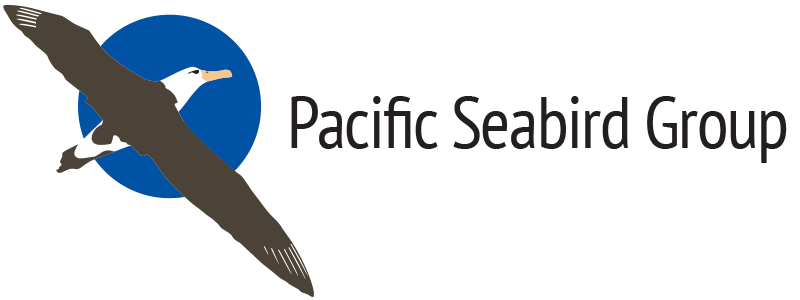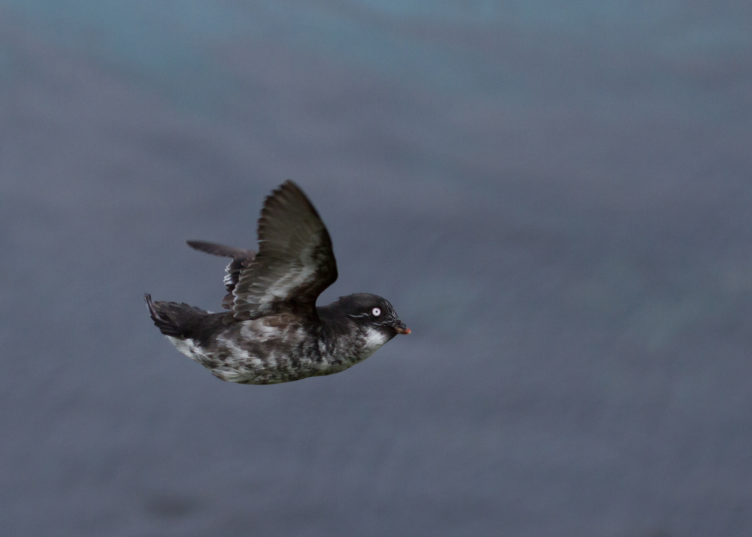Tākoketai/Black Petrels (Procellaria parkinsoni) on Aotea/Great Barrier Island, Aotearoa New Zealand
By Elizabeth Bell, Wildlife Management International Ltd, PO Box 607, Blenheim, New Zealand (biz@wmil.co.nz, www.wmil.co.nz)
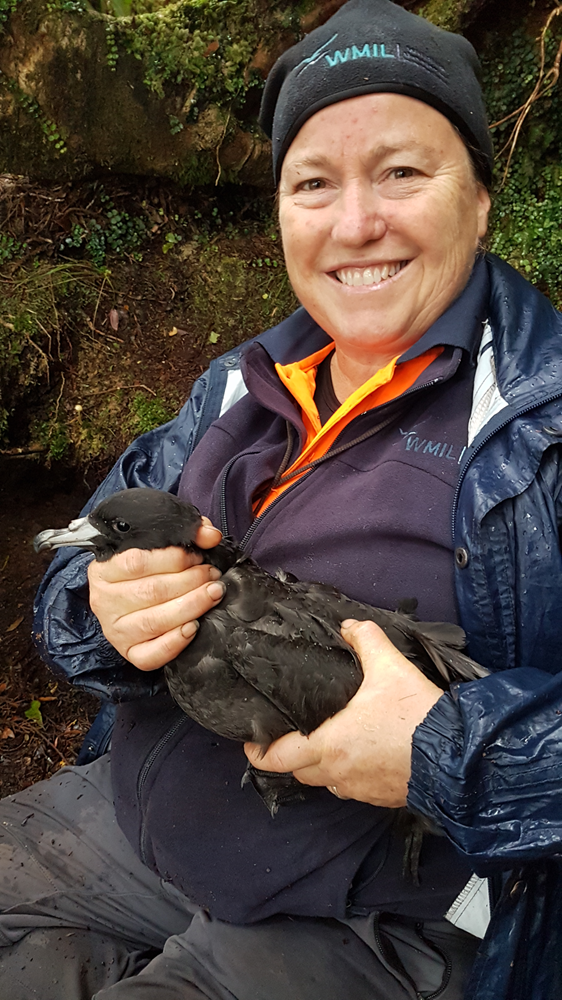
The tāoketai or Black Petrel (Procellaria parkinsoni), almost completely black with a pale yellowish, black-tipped bill, is an endemic Aotearoa New Zealand seabird. They once bred throughout the Te Ika-a-Māui/North Island and top of Te Waipounamu/South Island, but due to mammalian predators and habitat loss, are now only found on Aotea/Great Barrier Island and Te Hauturu-o-Toi/Little Barrier Island. Weighing on average 700 g, tākoketai have a 1.1 m wingspan adapted for soaring effortlessly at sea.
Wildlife Management International Ltd (WMIL), along with assistants and collaborators, have been studying these amazing birds since 1995 for Ngāti Rehua and the Department of Conservation. On Aotea, tākoketai are affected by habitat loss and predation by rats, feral cats and feral pigs, and at-sea by commercial and recreational fishing, climate change and pollution events. WMIL has been working at the main colony around the summit Hirakimata/Mt Hobson, monitoring 482 study burrows within the 35-ha study site each breeding season. This work can involve incredible gymnastics, putting one arm down into a burrow while trying not to slide down banks, lying over and under trees or rocks and being very tolerant of painful bites and scratches. All birds handled each season are banded with an individually numbered metal band so they can be identified, and their breeding history followed from year to year. Over 3,000 adults and over 5,000 chicks have been banded over the 29-year study to date.
Tākoketai have always been on Aotea with their current range mainly restricted to high ridges and mountains. They are nocturnal on land, returning to Aotea between dusk and dawn. As most birds breed in the dense forest around Hirakimata, they just crash down through the trees when arriving, collapsing their wings and hitting the canopy with a loud crunch. It can be very odd to be sitting in the dark hearing one crash land in the canopy, wriggle through the foliage and flop to the ground, usually less than a metre away from the entrance to its burrow. When leaving, tākoketai either climb a tree, or scale a protruding rock or other high point such as the summit platform – spreading their wings to feel the air and then launch themselves off, leaping into the sky, soaring off to sea.
The only time that tākoketai spend on land is during their breeding period; there are an estimated 5,000 breeding pairs worldwide, with most on Aotea. Tākoketai return every October. Males return first to the burrows to prepare it for the year’s breeding effort by gardening outside the entrance and building a nest inside the chamber. Pairs generally use the same burrow throughout their whole breeding lives—up to 40 years.
Females head directly to their burrow following the far-carrying male “clacking” calls, sometimes calling in response from the air. They renew their relationship, strengthen their pair bond, mate, and then depart for their “honeymoon”. The females grow the egg at this stage returning between late November and late December to lay a single egg. If this egg fails, tākoketai do not re-lay that year. Both adults share the responsibility of incubating the egg for nearly two months (on average 57 days). Through various tracking and logger work at Aotea, data shows that tākoketai head to the northern waters off Aotearoa, the eastern offshore waters of Australia and into the southern Pacific to forage, generally diving around 10 metres, although capable of reaching 34 metres, after fish and squid. Tākoketai also feed in association with whales and dolphins, as well as scavenging behind fishing boats. Each year the WMIL research team are joined at the colony by commercial fishermen, where we teach them about tākoketai and how precious they are – pushing the fishers into the burrows and laughing unsympathetically as they experience the sharp bills and claws despite the thick leather gloves, but also watching them fall in love with tākoketai and becoming their champions. One year, a fisher said that everyone should have the chance to see these birds.
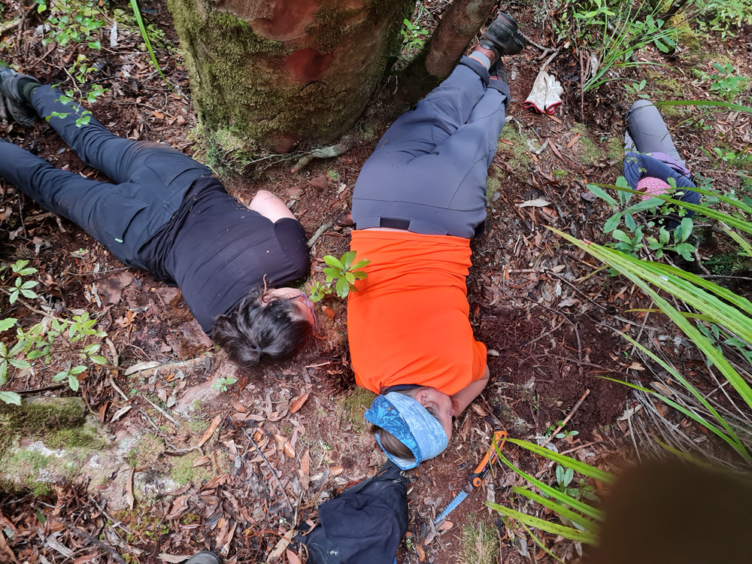
Chicks hatch from late January, with fuzzy “afro” hairstyles, loud “honking” calls and attempting to bite when they are checked, often harder than expected. Handled delicately like over-filled water-balloons waiting to burst, chicks grow quickly; by 10 days old they can be left unguarded in the burrow while both parents go to sea for food, returning every two to three nights to feed the hungry chick. It takes over 100 days for chicks to reach fledging condition. Towards the end of the breeding season, the research team band all surviving chicks before they fledge sometime between May and June. These chicks learn how to fish for themselves and make their first overseas adventure through the Pacific to coastal waters off South America. Watching chicks walk to a prominent “launch rock” and clamber up with their wings spread out using their claws and bills to manoeuvre up the rock face and jump off on their first flight to South America is magic. Years of tākoketai using these rocks have left their mark with deep grooves scratched into the rock faces.
During the 2023/24 breeding season, 63.5% of the study burrows were occupied by breeding pairs, 12% occupied by non-breeding birds, and 24.5% were unoccupied during our visits (with over 50% of those unoccupied burrows showing no evidence of activity at all, i.e., blocked up, no feathers, scent of guano, etc.). Overall, 222 chicks were produced from the study burrows representing a fledgling success rate of 72.5%.
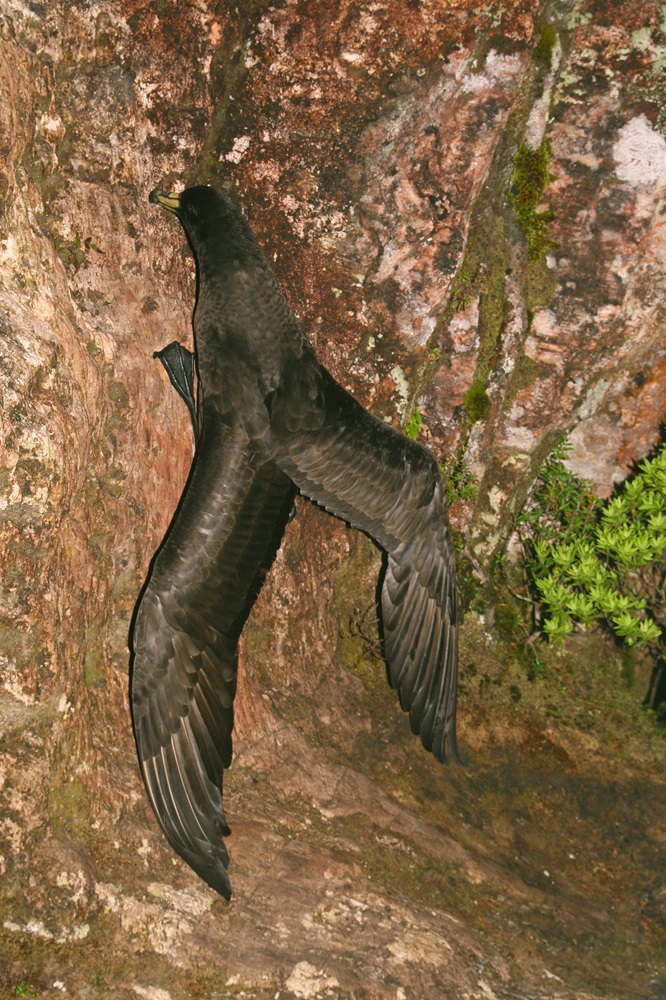
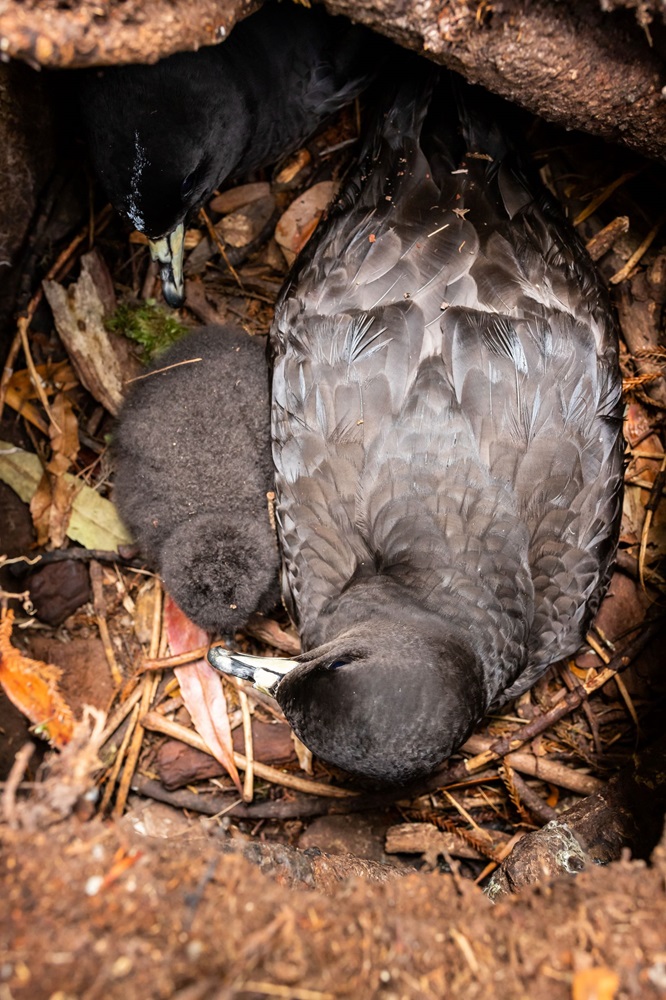
When the adults finally depart after their chick fledges, they also head to waters off South America to feed on the Humboldt Current’s rich resources, spending this time recovering from one busy year and preparing for the next. Chicks remain in these overseas coastal waters for two to three years before returning to start raising chicks of their own. To date WMIL has only recaptured less than 10% of all fledged chicks back at Aotea. Understanding the factors affecting return rates of chicks within the 35-ha study site is vital. It is important to determine whether it is related to low juvenile survival or if it is simply due to a lack of detection. Understanding juvenile survival and recruitment is necessary for accurate demographic modelling and for species risk assessment modelling and we will be continuing to obtain this data with urgency. WMIL plan to monitor these amazing birds for years to come and continue to learn as much as we can about tākoketai.
